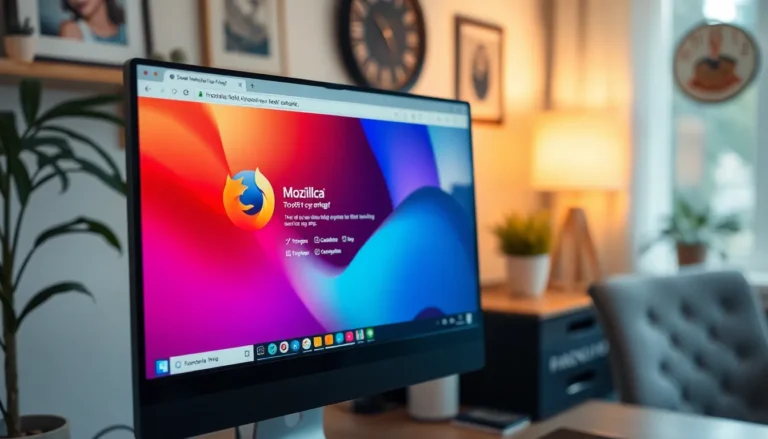Table of Contents
ToggleIn the chaotic world of elementary school, keeping track of assignments, activities, and snack days can feel like herding cats. Enter the student planner—a superhero in disguise, ready to save the day! With colorful pages and fun designs, these planners turn organization into an adventure, making it easier for young learners to stay on top of their game.
Overview of Student Planners for Elementary School
Student planners serve as valuable tools for young learners navigating the demands of elementary school. These planners help students manage assignments, track activities, and remember important dates like snack days. Designed with bright colors and engaging patterns, planners maintain children’s interest while promoting organization.
Effective planners often include sections for tracking daily tasks, weekly goals, and personal reflections. Teachers may encourage students to use these planners daily, reinforcing routine and responsibility. Incorporating creative elements, such as stickers and drawings, makes the writing experience more enjoyable.
Many planners feature additional resources, such as space for contacts, important school information, and monthly calendars. Functionality enhances the learning experience by emphasizing structure without overwhelming students. Parents find it easier to engage with their child’s academic life when the planner acts as a communication bridge.
Young students might benefit from planners focusing on specific skills. For example, daily sections can emphasize time management, while monthly layouts enhance long-term planning. These features encourage students to develop habits that contribute to academic success.
Teachers play a crucial role in promoting these planners, guiding students on how to use them effectively. With regular check-ins, educators can ensure that students stay on track with their organization skills. The ongoing support helps instill a sense of accountability and self-discipline early in their academic careers.
Benefits of Using Student Planners
Student planners serve as valuable tools for elementary school students. They not only provide structure but also teach essential skills for academic success.
Enhancing Organization Skills
Organization skills improve significantly with regular use of student planners. Each planner includes designated sections for daily tasks, which help students prioritize assignments or activities. Utilizing these sections encourages students to keep track of important dates, ensuring nothing gets overlooked. Colorful designs attract young learners, making organization more enjoyable. Engaging elements like stickers motivate children to personalize their planners, resulting in increased ownership over their responsibilities. Students become accustomed to self-monitoring, building a foundation for future organizational success.
Promoting Time Management
Time management becomes a key focus when using student planners. Each week, students set goals for completing assignments or preparing for events. By allocating time effectively, they learn to balance academic and extracurricular commitments. Tracking progress on weekly tasks fosters accountability, guiding students toward understanding deadlines. Engaging with monthly calendars allows for long-term planning, which teaches foresight regarding major projects or assessments. Routine reflections encourage students to evaluate their effectiveness in managing time. Such skills are vital for navigating both current educational demands and future challenges.
Features to Look for in Student Planners
Selecting the right student planner involves considering several essential features. These elements enhance usability for elementary school students, making organization more accessible and enjoyable.
Age-Appropriate Design
Age-appropriate designs cater to the visual and cognitive needs of young learners. Bright colors and fun graphics attract attention, engaging students in their planning process. Illustrative elements maintained at a child-friendly level encourage creativity. Planners should incorporate illustrations relevant to school themes, holidays, or seasonal changes. This connection to their world makes planners feel familiar and approachable. Fun characters or themes can also inspire students to interact with their planner more often.
User-Friendly Layout
A user-friendly layout simplifies navigation and understanding. Clearly defined sections for daily tasks, homework, and upcoming events make it easy for students to locate information quickly. Ample white space helps avoid clutter, ensuring students can focus on their tasks without feeling overwhelmed. Incorporating checkboxes or space for doodles promotes active engagement. Planners equipped with a weekly overview layout allow students to visualize their commitments effectively. By making it easy to track assignments and deadlines, a user-friendly layout enhances the overall planning experience.
Types of Student Planners
Selecting the right type of planner can meet varied needs and preferences of elementary school students. The two primary categories include digital and paper planners, each offering unique advantages for young learners.
Digital vs. Paper Planners
Digital planners often provide interactive features like reminders and notifications. They offer accessibility across devices, making it easy for students to keep track of assignments from anywhere. Many digital planners feature integration with educational apps or platforms, enhancing collaboration with teachers. Conversely, paper planners encourage tactile engagement, allowing students to write down tasks and doodle, which can aid memory retention. The physical act of writing can enhance learning and understanding. When students personalize paper planners with stickers or drawings, it boosts their motivation and ownership.
Customizable Options
Customizable planners allow students to express their individuality. Many planners come in various sizes, colors, and formats, providing choices that cater to students’ preferences. Some options feature blank pages for drawing or personal notes, fostering creativity. Stickers and motivational quotes can further personalize the user experience. Fill-in-the-blank sections can help structure thoughts, aiding in goal-setting and reflection. By selecting specific layouts or themes, students feel more connected to their planners, enhancing their motivation to use them regularly.
Tips for Implementing Student Planners in the Classroom
Effective implementation of student planners enhances their benefits. Teachers can use strategies to maximize planner engagement and accountability among young learners.
Involving Students in the Process
Involving students in selecting their planners promotes ownership and enthusiasm. Students can express preferences regarding colors, designs, and layouts, resulting in a sense of connection to their tools. Encouraging input fosters excitement and increases motivation to use planners daily. Personalization options can also allow them to add stickers or decorations, enhancing creativity. Teachers might hold discussions about how planners can assist with organization and time management, creating a dialogue around effective planning. By encouraging participation, educators help students understand the value of planners in managing their academic responsibilities.
Encouraging Regular Use
Regular use of planners leads to improved organization skills. Establishing a routine for students to update their planners at the same time each day fosters consistency. Teachers can introduce engaging activities, such as weekly planning sessions, where students share their upcoming assignments and goals with peers. Utilizing visual reminders, like chart displays, can also motivate students to check their planners regularly. Providing consistent positive feedback when students engage with their planners reinforces the habit. Integrating planners into classroom activities, such as journaling or class projects, further emphasizes their importance. By embedding planners into daily routines, educators promote responsibility and time management skills among students.
Student planners are more than just tools for organization; they’re gateways to developing essential skills in young learners. By incorporating fun designs and interactive elements, these planners make the process of tracking assignments and responsibilities enjoyable.
Teachers play a crucial role in guiding students to use these planners effectively, fostering a sense of accountability and self-discipline. As students engage with their planners, they learn to manage their time and prioritize tasks, setting the foundation for future academic success.
Ultimately, the right planner can transform the chaotic experience of elementary school into a structured and enjoyable journey, equipping students with the skills they need for lifelong learning.





